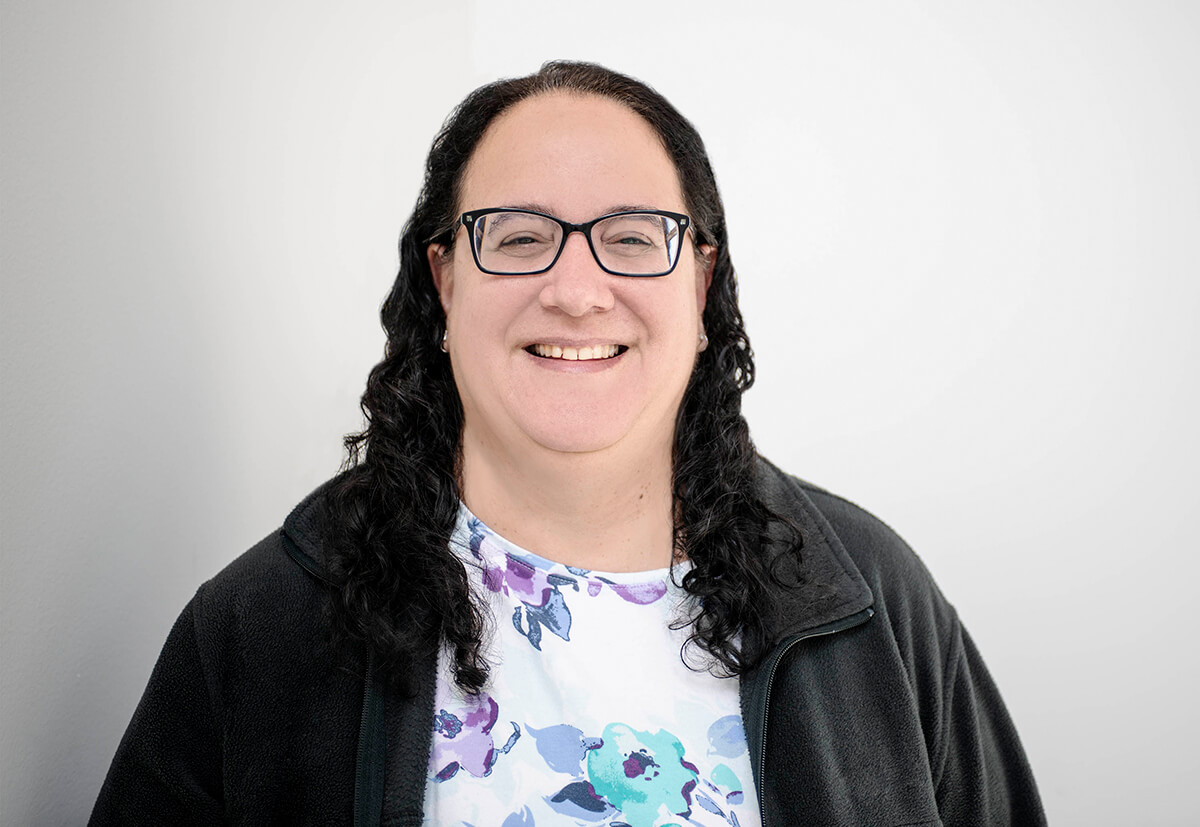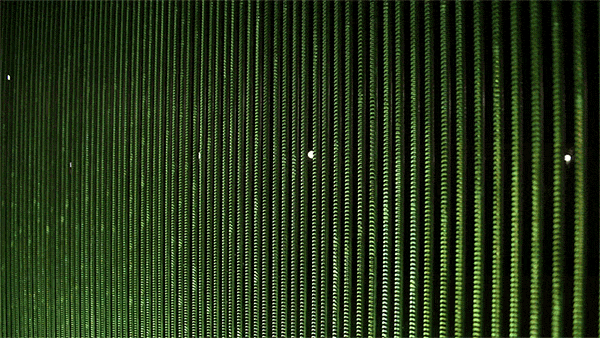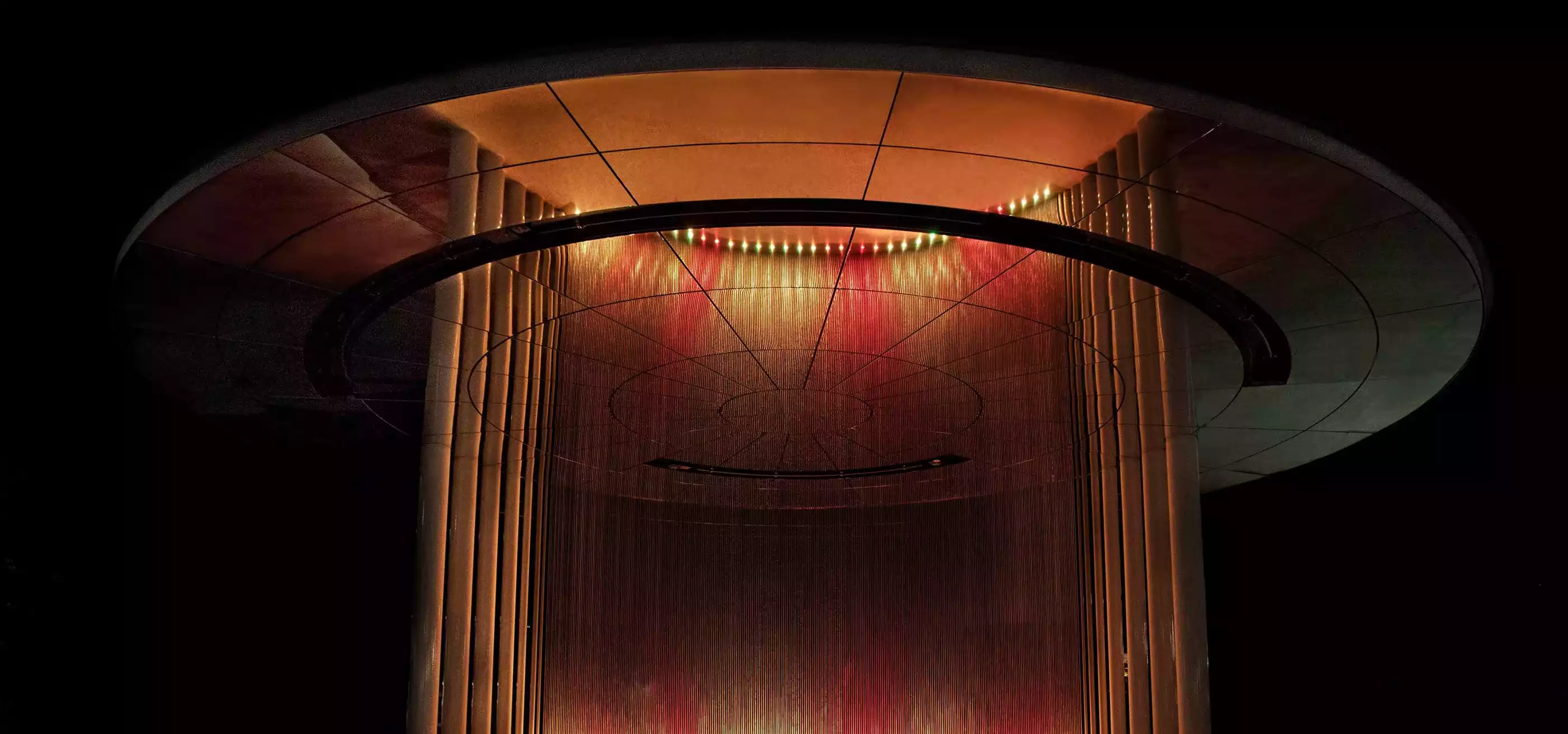DigiPen is renowned for its achievements in computer science, digital arts, and game development — but this month, the school expanded its horizons into an area you might not expect: park planning. The city of Redmond officially opened its new Downtown Park on September 15, its centerpiece being a high-tech pavilion constructed after four years of consultation with DigiPen game design professors Ellen Beeman and Jen Sward.
The City of Redmond initially approached DigiPen in April of 2014, at which point, designs for the park were still fuzzy. “They showed up and they said, ‘We want a high-tech park because we’re a high-tech city,’” Beeman says of the first meeting. “So we talked a bit about what the park was and they showed us drawings of what they had in mind, but they didn’t really know what they wanted to do yet.”
Beeman and Sward stepped forward to help the city explore its many different ideas for integrating tech into the park, roping in a former colleague of Ellen’s from Microsoft Research with expertise in touch technology and sensor mapping to assist. “The city wanted to do projection mapping, which is this cool 3D video technique you can do on real spaces, and I said, ‘Yes! I’ll research it for you!’” Beeman says. “And then I came back and said, ‘The projectors will cost at least $150,000!’ And they said, ‘…No.’”
Things came into sharper focus in May of 2016 when a pavilion design by Jill Anholdt, an artist and design professor at Emily Carr University in British Columbia, was selected by the city. Topped off by a futuristic mirrored roof, the pavilion features a waterfall that cascades down 380 etched metal rods, all lit by 30 individually programmable LED lights at the base of the structure. “It’s really neat stuff,” Beeman says. “The idea is that you can project light on it, and it acts as a projection screen.”

Of course, projecting decipherable video images onto 380 metal rods with a waterfall cascading down it poses some unique challenges. That same month, an “itty-bitty” four-foot-tall prototype of the pavilion was built, and the Redmond Park team entrusted Beeman and Sward with testing various “visualizations” to explore its capabilities and limitations. Beeman quickly created a 3D “rollerball” video game to evaluate the projection quality, in addition to a slew of other home-cooked video tests.
Against expectations, Beeman and Sward discovered that the pavilion was curiously adept at displaying certain kinds of visuals. “A lot of projectors can’t handle black very well. This thing handles it flawlessly — it soaks it up! Who would have thought?” Beeman said. “It also had surprisingly good pixel fidelity for a field made up of vertical metal columns spaced one inch apart.”
Even so, the pavilion’s constraints quickly became apparent as well, due largely to that same one-inch spacing. “There was definitely what’s called a ‘persistence of vision’ effect,” Beeman says. “Our brain wants to fill in the blanks. So that was what a lot of my tests were — figuring out, with the brain’s ability to construct stuff and with these bars an inch apart, how to make something still readable. It was an interesting challenge.”

The team found that distinguishing shapes projected onto the pavilion became much easier when they were given a bit of movement. As for lettering, Beeman and Sward discovered viewers can fill in the blanks, but larger, bolder, and wider fonts helped increase readability. That being said, there were still some caveats.
“You know the angled text in Star Wars they use in the intro?” Beeman says. “I tried that, and it was just confetti, complete and absolute confetti. Your brain couldn’t make out a single word because it was angled and broken up by the bars.”
Thanks to Beeman and Sward’s tests, a set of guidelines and regulations for future artists’ works are being established for the pavilion, which is now open as a public gathering space. While projections will only be up during special events, the public can expect those 30 LEDs at the base to deliver season-specific light shows throughout the year. Those LEDs will also be the focus for DigiPen and Redmond’s collaboration on the park moving forward.
“Using the same software as the Bellagio Hotel in Las Vegas, you can program pretty cool stuff on those LEDs individually,” Beeman says. “The idea is we eventually want to build a website where the public can design their own light shows. I’m hoping the city of Redmond and DigiPen will do more together in the future! I told [Mayor Marchione], ‘Please bring us more projects like this! This is some of the most fun I’ve ever had.’”
